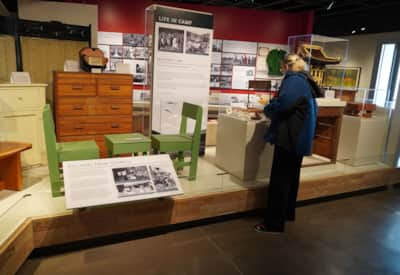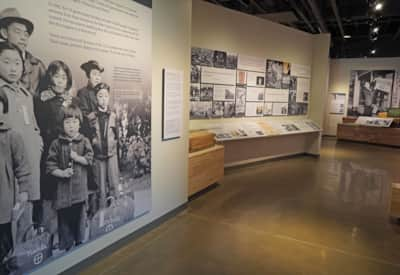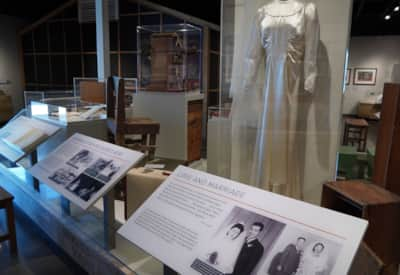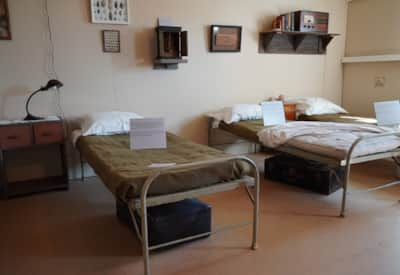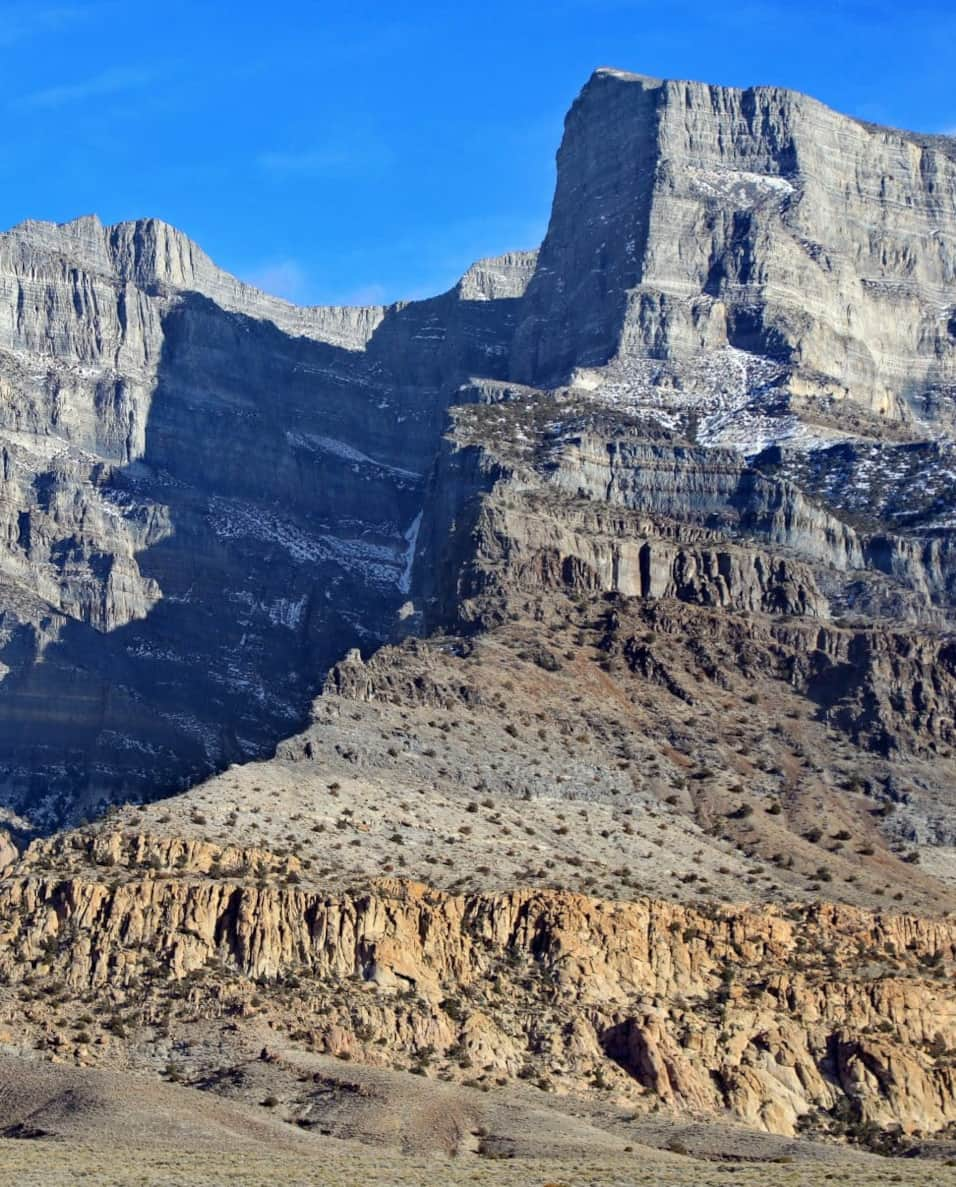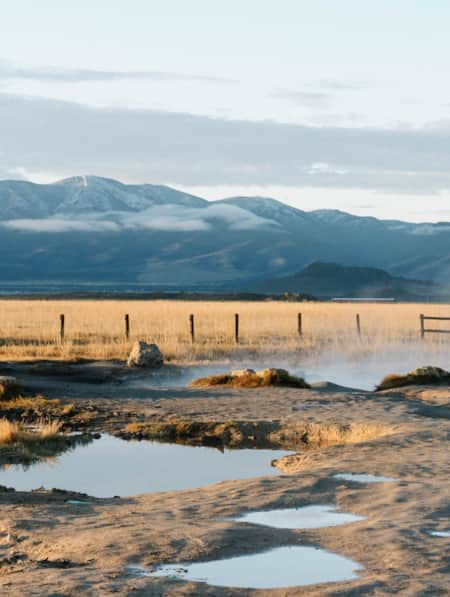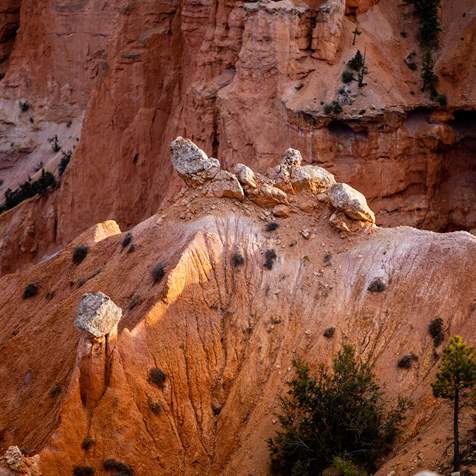Lighting a Dark Corner of U.S. History in a Small Corner of Utah
Delta’s Topaz Museum beautifully enfolds the story of a tragic, often overlooked chapter in U.S. history.
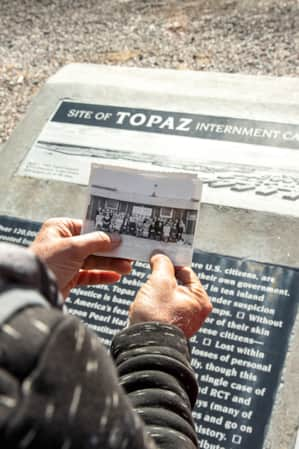
As with humans who often obscure the shameful missteps in their lives, so it is with countries. For thousands of visitors each year, the Topaz Museum on Delta’s Main Street shines a bright light on one of those dark corners in American history.
To some, the story is old and personal, and they come to the Topaz Museum to pay homage or learn more. To others, the story the museum tells is new and surprising; sometimes sad, sometimes inspiring.
“The history has not been widely disseminated,” said museum founder Jane Beckwith. “Twenty years ago, it was very unlikely people were learning about Topaz.”
Topaz was one of 10 War Relocation Authority incarceration sites that together imprisoned more than 120,000 U.S. residents of Japanese descent after the Dec. 7, 1941, attack on Pearl Harbor. Most of those imprisoned were United States citizens.
Located just outside of Delta, Topaz held more than 11,000 men, women and children during three years of operation, from Sept. 11, 1942 to Oct. 31, 1945.After its closure, the site was eventually stripped of its more than 500 buildings — barracks, mess halls, laundry/toilet/bathing facilities and schools — and the camp was gradually reclaimed by the windswept desert and greasewood shrubs. Many of the site’s buildings were purchased and moved by private citizens; some are still in use today around Delta, Fillmore and Gunnison.
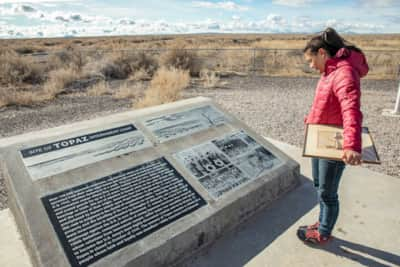
"The history has not been widely disseminated. Twenty years ago, it was very unlikely people were learning about Topaz."
– Jane Beckwith, Founder of the Topaz Museum
How Journalism Students Got the Scoop
The once-bustling city lay abandoned and largely forgotten until 1982. That year, Beckwith, a Delta High School English teacher, assigned her students to gather as much information as possible on Topaz. Students interviewed Delta residents who had collected camp artifacts — so many, in fact, that in the late 1980’s Beckwith began displaying some of the items in a space rented from another museum in town.
Eventually, the Topaz collection grew so large, Beckwith began raising funds for what became the $3.1 million Topaz Museum. “Fundraising started with Topaz internees,” she said. “We ended up getting a pretty large mailing list.”
Former internees and their families also made pilgrimages to the site. The museum opened initially in 2015 as a gallery, displaying artwork made by internees. In 2017, after historical exhibits were completed, it became a museum that is now visited annually by more than 10,000 people.
Most are from Utah or neighboring states, but one visitor came from as far away as the Netherlands. “He said he read a story about us in a newspaper and planned his trip to the western part of the United States to include a visit to the museum,” Beckwith said.
The guestbook shows visitors from Egypt, Japan, Mexico, the Dominican Republic, as well as states, including Hawaii and Alaska. On a recent day, a donation box at the museum’s entrance contained many U.S. dollars, even a hundred dollar bill, but also paper currency from Hungary, Malaysia and Sweden.
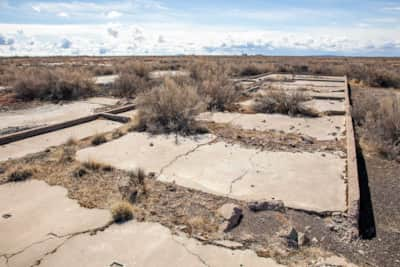
Visiting a ‘Beautifully Made Museum’
Visitor comments left in the guest book, some of which are on the museum’s website, marvel at finding such a collection here. “This is a beautifully made museum. The quality amazed me, especially in a small town in the middle of nowhere. It beautifully encompasses the story and brings me such emotion.”
The museum’s exterior is constructed of sand-colored brick and a dark overhang above the main entrance. Inside, wooden planks on a wall in the lobby bear the same dark color, mimicking the uniquely Japanese weatherproofing technique, yakisugi, in which wood is charred black to make it weather resistant.
Inside, visitors can become familiar with Topaz by watching two six-minute movies. One is an overview of the Japanese American experience in the incarceration centers, while another is a collection of home movies clandestinely filmed by internee Dave Tatsuno, who smuggled a camera into Topaz.
Exhibits explain Executive Order 9066, signed on Feb. 19, 1942, by President Franklin D. Roosevelt. It ordered the forced removal of all persons of Japanese descent living on the West Coast to 10 “War Relocation Centers.” To acknowledge the injustice of Order 9066, Utah Gov. Spencer Cox in 2021 signed S.B. 58, designating Feb. 19 as an annual Day of Remembrance in observance of the incarceration.
The museum’s exhibits explain the miserable living conditions in horse stalls at Tanforan and Santa Anita race tracks, where the Topaz internees were temporarily held for months until the incarceration center was built.
"This is a beautifully made museum. The quality amazed me, especially in a small town in the middle of nowhere. It beautifully encompasses the story and brings me such emotion."
Exhibits and information plaques about Topaz carry titles such as “Covered in Dust” and “A Desolate Landscape.” There’s also a miniature reproduction of the camp showing its layout of barracks, administrative buildings and guard towers.
Visitors can enter a restored example of living quarters in the barracks — single beds, a bare light bulb, a pot belly stove for heat and furniture made by the internees from scrap wood and crates. A section of a recreation center from Topaz sits adjacent to the museum on the south side.
The museum’s gift shop sells books about the incarceration experience, as well as T-shirts, DVDs, delicate origami earrings and other memorabilia.
“There is a poignancy to the space and site,” said Emily Johnson, field services manager for the Utah Division of Arts & Museums. “ It’s important to bear witness to a story that is a complicated and often uncomfortable part of Utah’s history. The story is too important to not make the trek to Delta.”
Many museums try to tell the story of a wide swath of human history. “But the focus on Topaz is so small, a period of time so short, and the story so specific, that’s their super power,” Johnson said.
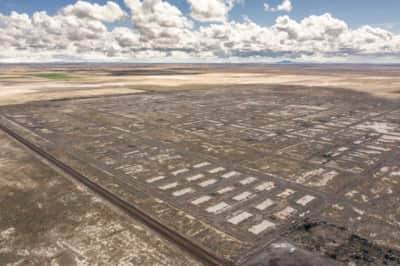
"It’s important to bear witness to a story that is a complicated and often uncomfortable part of Utah’s history. The story is too important to not make the trek to Delta."
– Emily Johnson, Field Services Manager for the Utah Division of Arts & Museums
Bearing Witness at the Topaz Incarceration Site
The incarceration site, located about 16 miles northwest of the Topaz Museum, might appear devoid of any evidence of a city that once housed thousands of people. But a monument marks its location, and outlines of its building foundations and gravel pathways can still be seen, along with nails and other artifacts from the 1940s.
The museum has purchased 639 of the site’s 640 acres. The remaining acre is owned by Japanese American Citizens League chapters that placed a monument at the site in 1976.
Johnson said that makes the Topaz Museum unique among other incarceration center museums. Many own only a portion of an incarceration center’s footprint or are owned and operated by the National Park Service. The museum’s ownership of the square-mile site “represents decades of effort and negotiating with landowners and speculative development interests in the area to preserve a historic archaeological site,” Johnson said.
Signs bearing the benign-sounding “Topaz Relocation Site” direct visitors to the incarceration center on two-lane roads.
Anyone can drive out to Topaz, but Beckwith strongly suggests visitors first tour the museum. That’s so they don’t just look but, more so, understand what they are seeing, how the land reveals the harsh living conditions, the dismal desolation, the appalling injustice of what took place behind the barbed wire of the Topaz incarceration site.
On a windless December day, under a stainless steel sky, there was complete silence at the Topaz monument with its large informational panels and an American flag that barely moved in the quiet. It evoked an “eerie reverence,” one visitor said.
That eerie reverence was a stark contrast to the buzz of school children and other visitors talking about exhibits at the museum back in town.
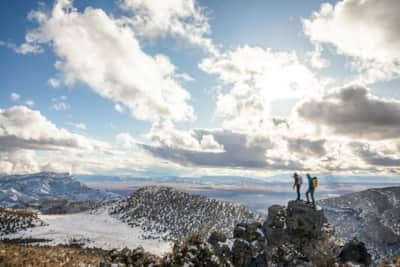
Spotlighting Stories of Resilience
Besides telling the story of Topaz and the civil rights violation it represented, the museum also tells stories of the internees’ resilience, making the best of the injustice imposed upon them. They were able to work in jobs at the incarceration center and in Delta, and could even go to school or work in Salt Lake City and other places outside the camp, but they weren’t allowed back to the West Coast. The thousands who stayed in the incarceration center tried to live their best lives, raise their families, pledge allegiance to the flag and even enlist to fight for the country that imprisoned them and their families.
Small children who visit the museum might be drawn to the toys, such as marbles, recovered from the incarceration site, along with beautiful, intricate jewelry made by the internees who used shells found in an ancient lake bed near the incarceration center. The museum recently added to its displays a koto, a Japanese musical instrument that once belonged to a camp internee. Visitors might find that interesting too.
But often what museum visitors appear to find most interesting is the fact that places such as Topaz existed during World War II. Beckwith has heard it again and again: “I never knew this happened.”
After a visit to the Topaz Museum, they know.
